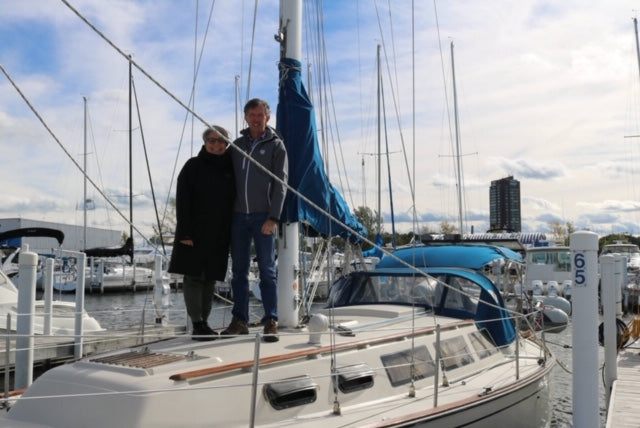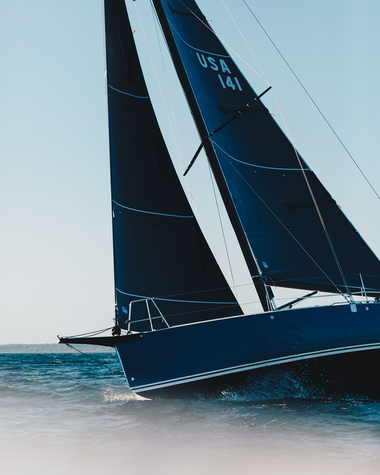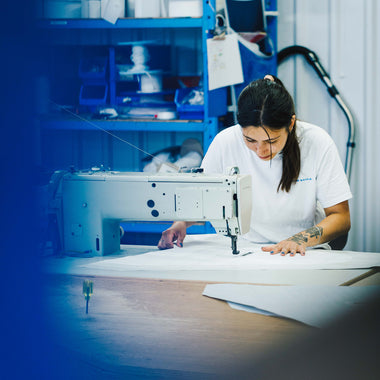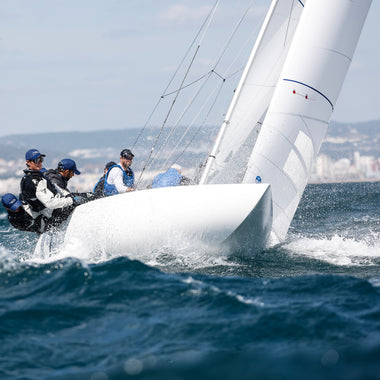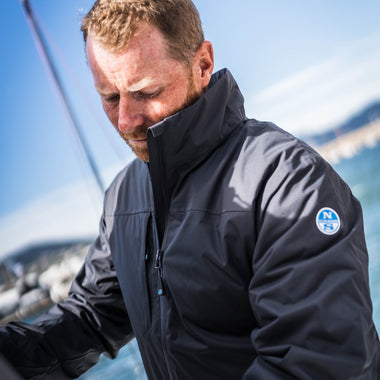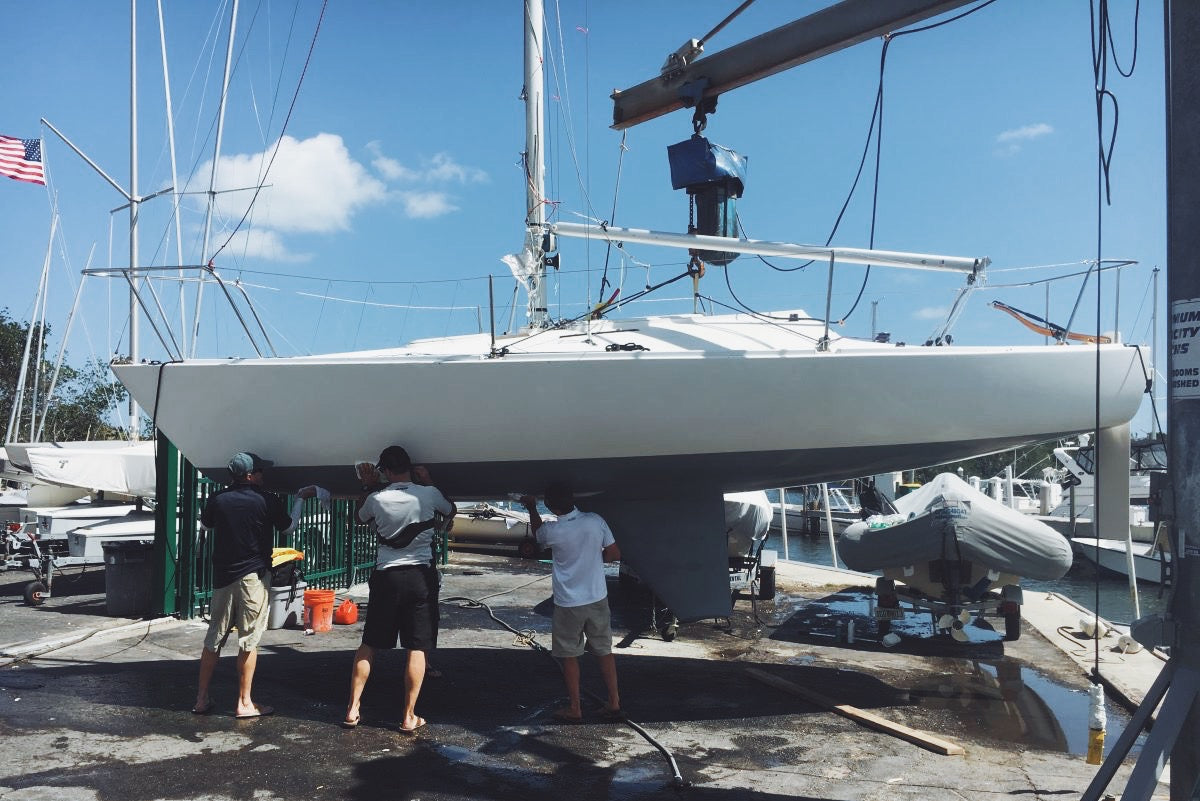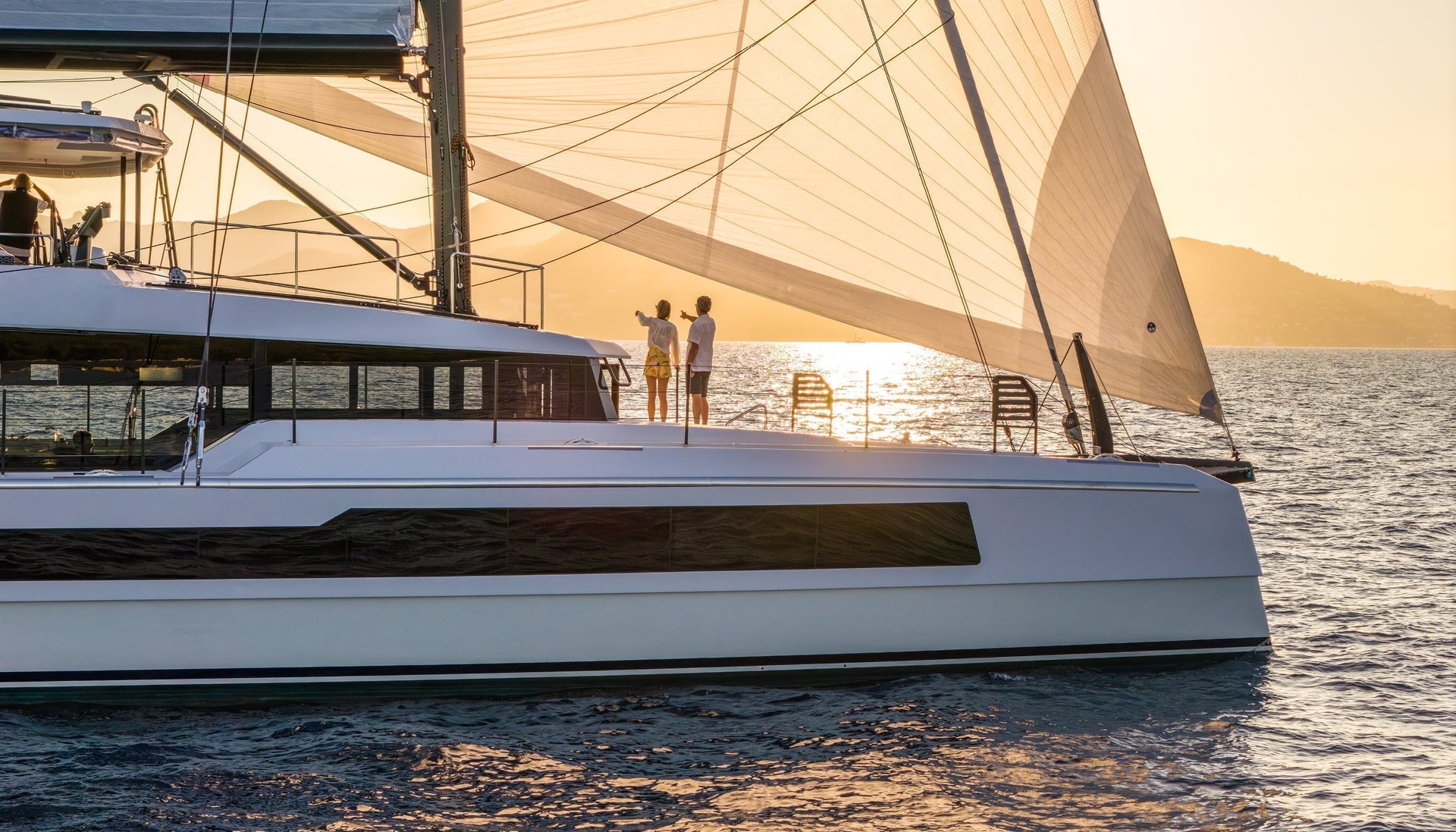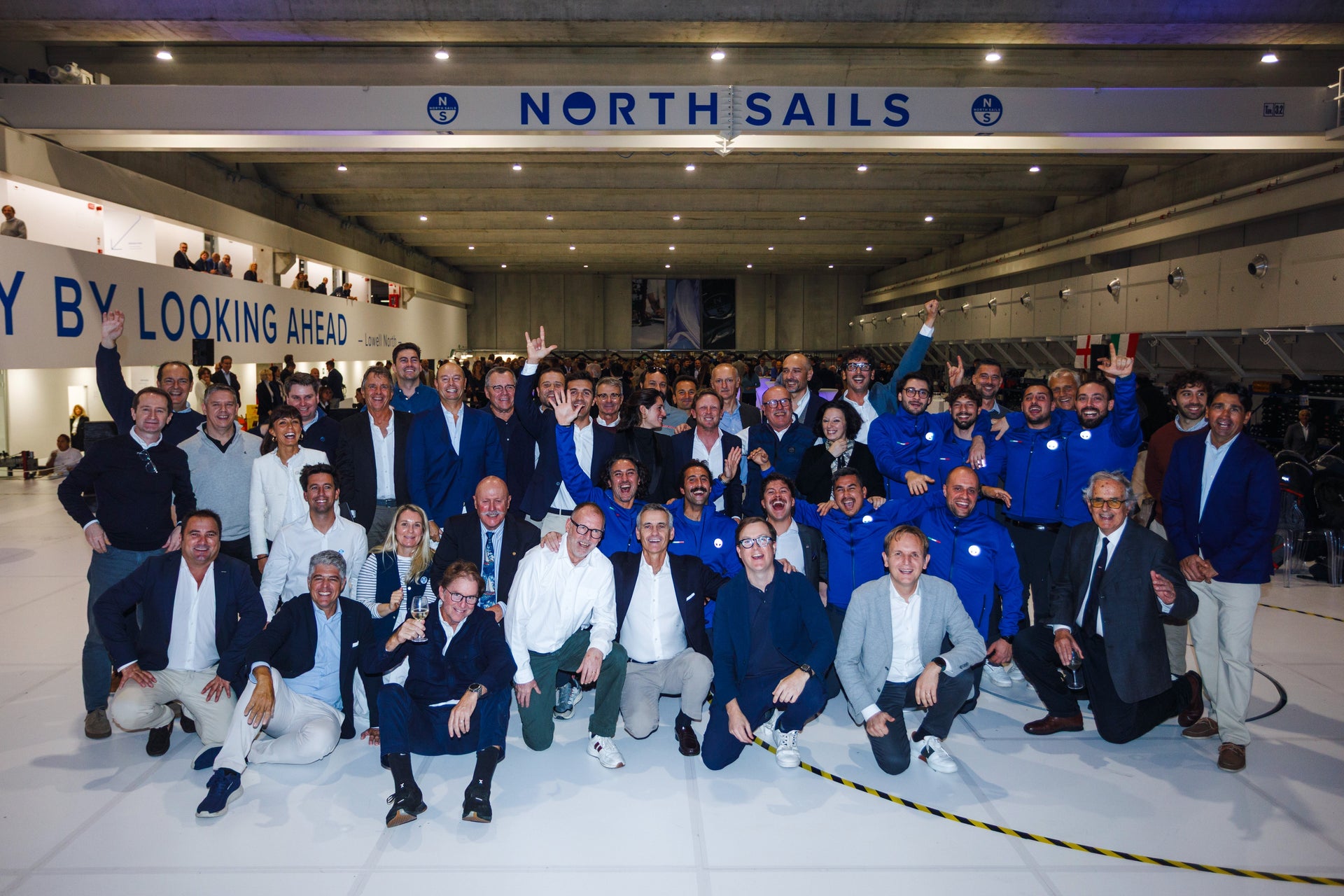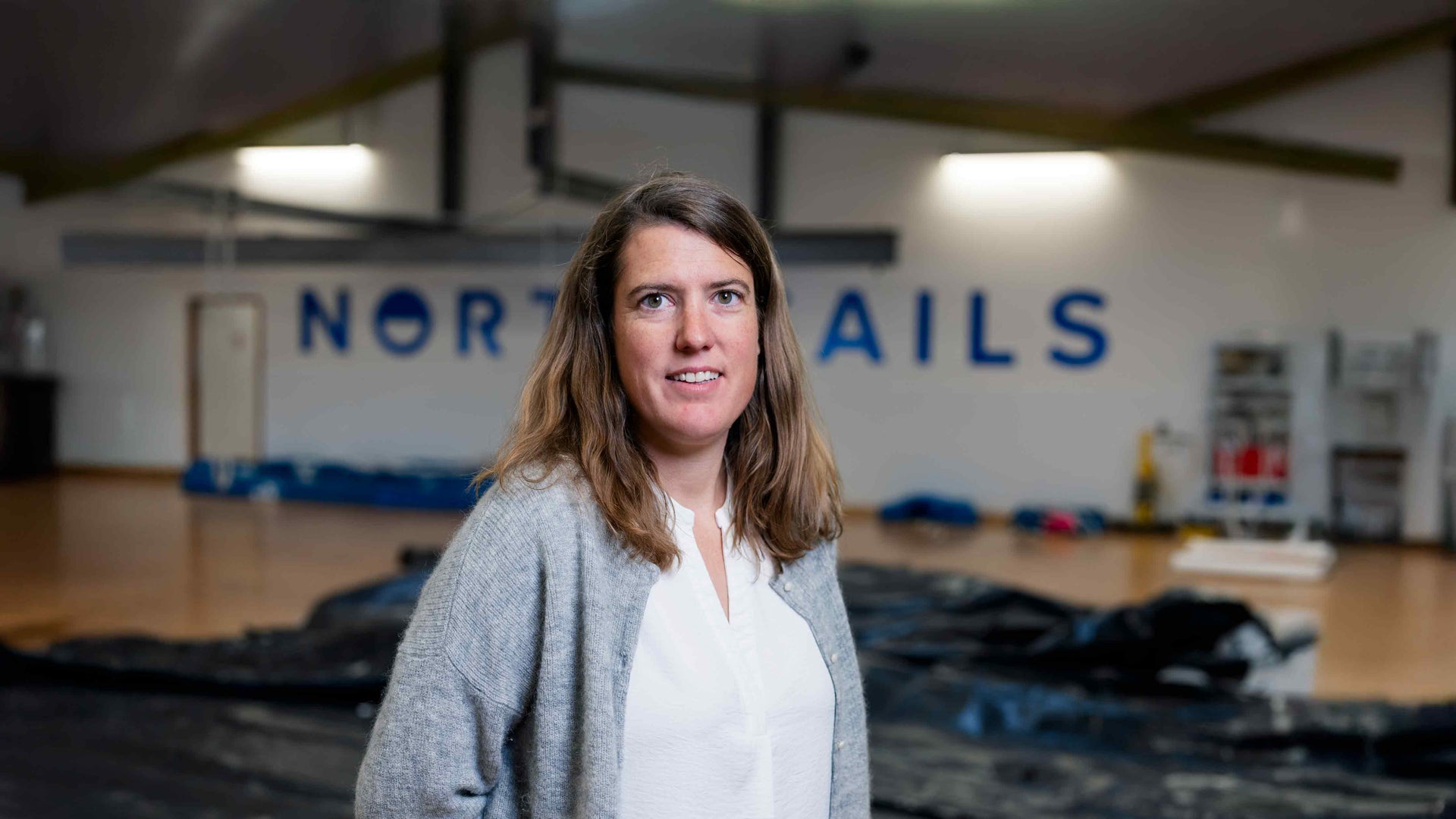CHARTERING A BOAT - TIPS TO MAKE IT A POSITIVE EXPERIENCE
DON’T BE AFRAID TO CHARTER A BOAT
Tips to make it a positive experience

Will Welles won the 2018 Midwinters in a chartered J/24. With his organization skills and attention to details, we think Will has come up with a system that helps minimize surprises when chartering a boat for an event. Here are his top tips:
We have all had good and bad experiences with chartering. Most people say it is luck of the draw, but I believe there are some things you can do to improve the odds.
First thing is to do your homework!
Make sure you find the best boat you can. Whether it is a particular builder, hull number, etc, make sure you dig until you find what you are looking for. I am pretty particular about the vintage of the boat, what mast it has, keel shape, rudder, etc… and if you can find a boat that already has good pedigree then that is a plus! What you are looking for is as close to turn-key; a boat that will need the minimum time to make it ready to sail.
Where to start?
First, start with the local regatta organizers and people you know and trust in the area who may know the local boats. It’s not what you know, it’s who you know at this stage.
Once you find a couple of boats that fit the bill, ask the owner for the class measurement certificate, history of the boat, recent upgrades, and what extra parts and pieces would be included.
Ask for detailed photos
Photos are always worth a thousand words! Ask for photos of the keel, rudder, rudder hardware, tiller, bottom, deck, mast, boom, running rigging, standing rigging, etc. I like to see how the deck hardware is laid out. While most boats run the same set up, it is not worth risking any surprises. The deck pictures should allow you to zoom in on hardware to see its age and condition.
After I have reviewed the photos, I ask the owner a few simple questions that can usually be answered with either yes or no, to speed up the reply. For the J/24, this is the list I use:
- Bottom, foils, rudder? Silky smooth?
- Headstay max class length?
- Protest flag?
- Yellow flag?
- Carbon spin pole?
- Good lifting strap?
- Tension gauge? Loos Gauge B?
- Optional equipment – weight, right at minimum all up?
- Five good life jackets?
- Compass – (I’d like to use yours if ok, just because I don’t think mine will fit on that older cradle)
- Velocitek – (I can bring mine)
- VHF – (I’ll bring my own)
- Boat tools?
- Windex masthead fly?
- Blocks, boomvang, etc., all good?
- Mast still straight?
- Mast butt adjuster?
- Dedicated rig tools?
Once I have these answers for each boat on my list, it’s time to choose the best boat for the event. However, the work doesn’t stop here; this is where the journey with your new charter boat begins!
Time is Precious!
I think we all can agree that time is precious at the regatta, so anything we can do to save time will help maximize our on the water time, which is how we’ll get used to our new best friend.
A big time-eater is trips to the marine store. Who even knows if there is a marine store near the regatta site, or how bad traffic will be? Even if the store is right around the block it still takes time away from going sailing. Put together a spares kit and either ship it to the regatta site or bring it with you. You don’t need to pack every spare part, just what you know you will need based on the information you have about the boat. I also take a few things that makes me feel comfortable right away: tiller extension, favorite mainsheet or windex, etc. Part of getting up to speed in a charter boat is having some familiar things around you. Here’s a list of stuff I bring with me:
- Running rigging (spin sheets, jib sheets, mainsheet)
- Karl’s Boat Shop tiller w/tiller extension
- Loos tension gauge
- Wetnotes with tuning matrix
- Calipers (depending on turnbuckles)
- Metric tape measure
- KG Fish scale (to weigh all up boat items)
- Spare blocks, clevis pins, ring dings, etc.
- Sail repair tape, sailmaker’s palm, needles, telltales
- Spare compass and bracket
- Velocitek and bracket
- Spinnaker launch bag
- Spectra lashing line
- Electrical tape
- Teflon tape
- Tools? Drill?
Add to this any parts you know you will need for the boat, based on the pictures and information you got from the owner.
Make sure you allow yourself plenty of time to get the boat sorted before going sailing. Hopefully you and/or someone else on your team likes and is good at boat work; ask other team members to figure out the lay of the land, so if you do need a part or a tool you can get it without too much fuss. In my experience, there are always nice locals who will loan you a missing item or help find one for you if you treat them well in return. I always try to help traveling sailors when they come to Newport, because it works both ways!
Check the Mast
Once the boat work is done and the mast is stepped I always measure to make sure the mast is in the center of the boat. There are a few ways to do this. I like to measure aft from the stem down each rail towards the mast and make a mark on either rail (starboard and port). Then I measure from the keel tip up to said mark on each side. Next, I get the mast straight at the base rig setting (20/15) and hang a bucket full of water over the rail. The goal is that the mark lines up on each side. If it doesn’t line up, I adjust the upper shrouds and use the lowers to make the mast straight at base dock tune.
If the mast is already stepped, I suggest sending someone up in a bosun’s chair to tape and check over fittings, etc., once the boat is in the water.
Time to Sail
Time to splash the boat, hook on the sails and head out for a shakedown cruise to see how everything looks and trims. You may add a few more things to the work list; if so, allow time in the early morning so you can sail most of the next day. Ideally, we will line up with another fast boat to see how we are going. Fingers crossed, everything aligns! At the end, we always try and leave the boat better than we found it.


